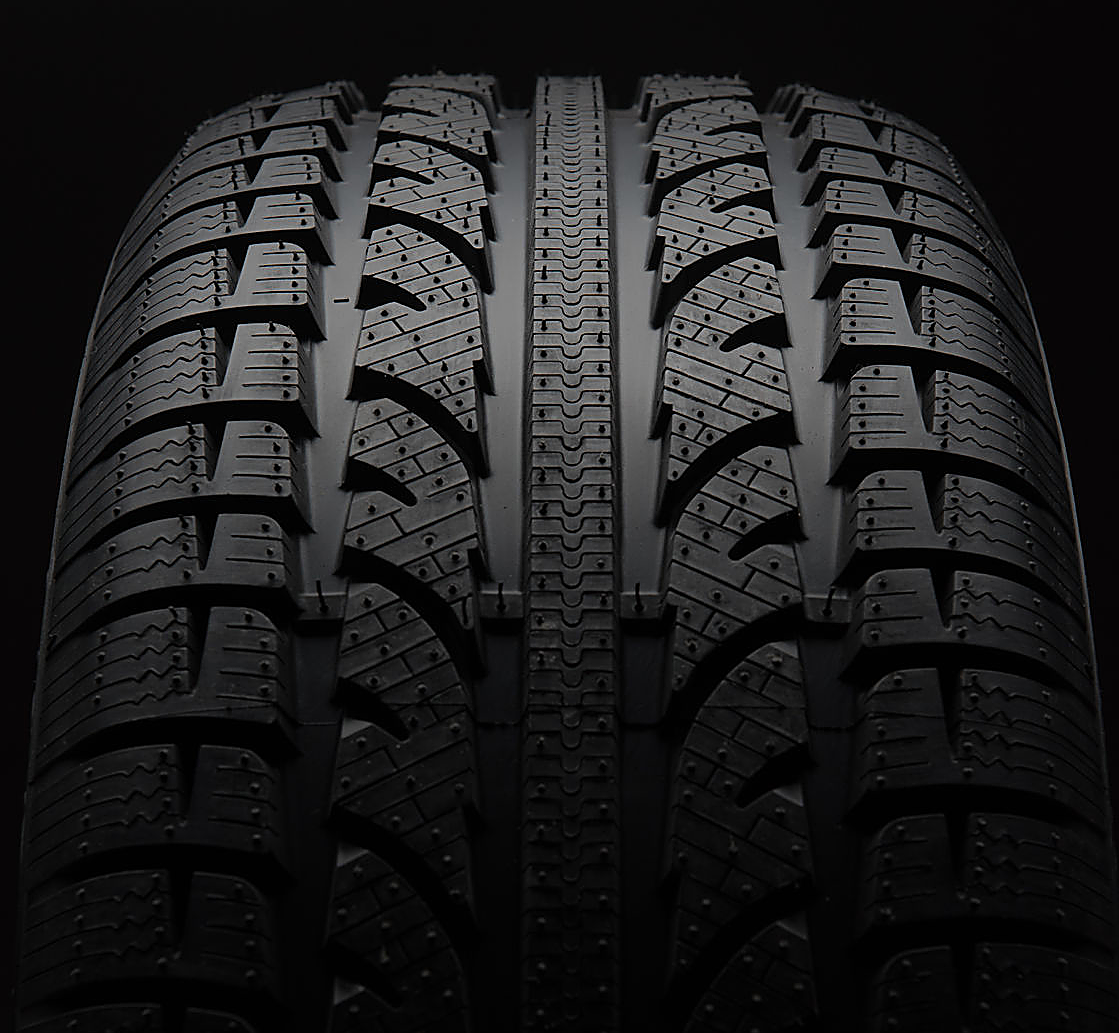 Few modifications will make as big an impact on the look and handling of your street machine as your choice of wheels and tires. The bottom line is that whether your car is being judged at a show or selected to be featured in a magazine, the three items that set the benchmark as to whether or not your car is even considered are stance, wheels, and tires. Even the most stock appearing vehicles can become real show-stoppers with the right choices in these three areas. Larger wheels and tires with greater tread width and shorter sidewalls can be a great start to turning even the most docile street machine into a real corner carver.
Few modifications will make as big an impact on the look and handling of your street machine as your choice of wheels and tires. The bottom line is that whether your car is being judged at a show or selected to be featured in a magazine, the three items that set the benchmark as to whether or not your car is even considered are stance, wheels, and tires. Even the most stock appearing vehicles can become real show-stoppers with the right choices in these three areas. Larger wheels and tires with greater tread width and shorter sidewalls can be a great start to turning even the most docile street machine into a real corner carver.
Few would argue that squeezing the most wheel and tire possible into your wheel wells is the current trend, but what considerations should you make in determining your selection? With the expense of new wheels and tires, many enthusiasts find themselves living with the wrong choices for years. Let’s take a closer look at some of the technology behind today’s wheels and tires, and what important items you should consider before making your next purchasing decision.
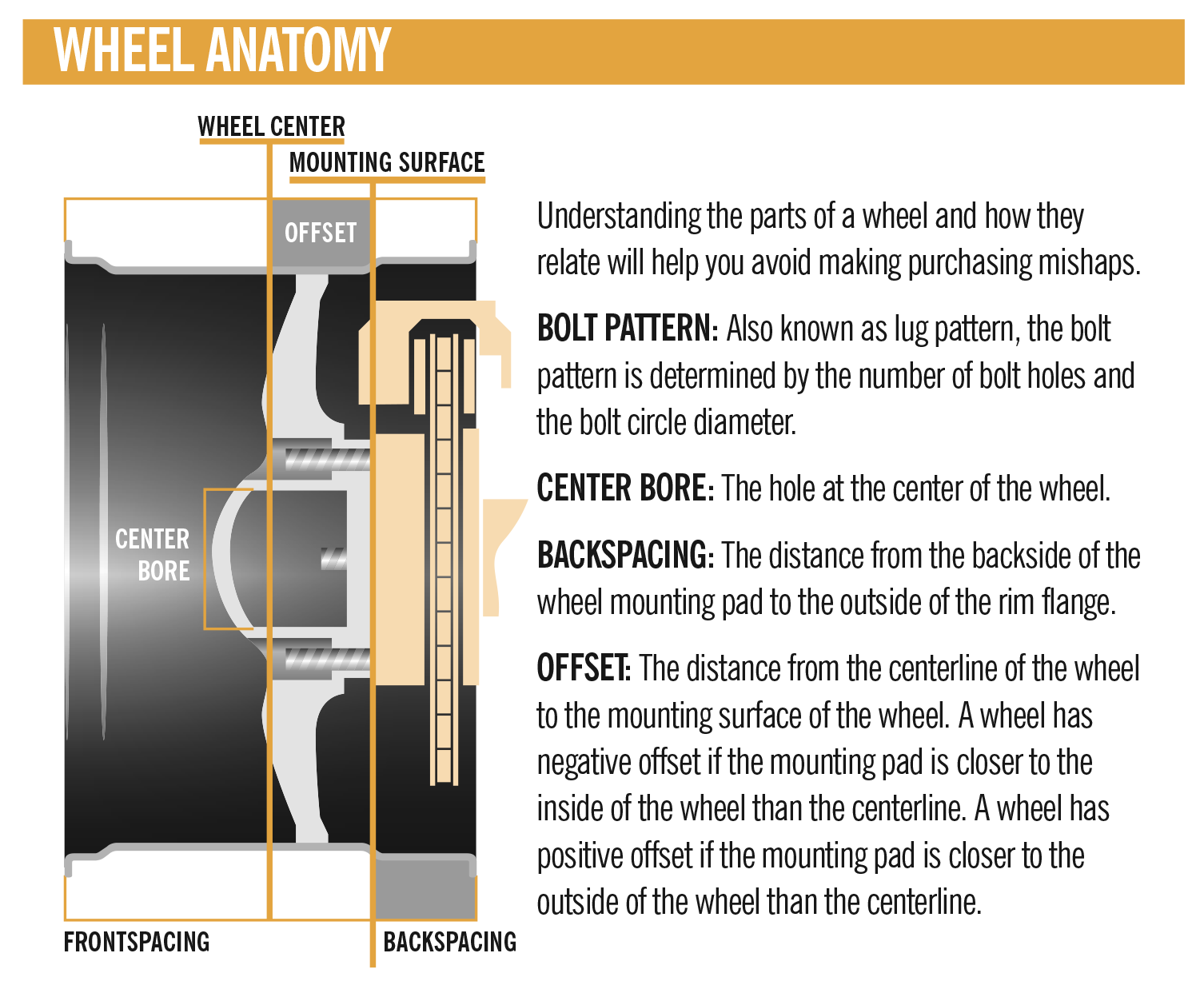
WHEELS RETROSPECTIVE
While the “mag” wheel was not introduced until the late ’40s, wheel design has been a vital part of the look of cars since nearly the birth of the automobile. Many cars of the late ’20s and ’30s were available new with a variety of wheel options including steel wheels, wooden spokes, and wire wheels. By the late ’40s, magnesium wheels became the rage of the racing community because they could reduce the unsprung weight of their cars and gain an advantage over their competition. Early mag wheels offered by companies like Halibrand Engineering and American Racing were relatively crude castings, but soon the hot rodders of the time desired these wheels to give their car a real competition flavor. The custom rodders of the day often chose to go the way of the wheel cover or hubcap to achieve a more finished look.
As the quality of the castings and metallurgy improved, a host of new companies sprang up by the late ’50s offering a variety of wheels specifically for the street market. During the ’80s and ’90s, most wheel manufacturers anticipated their wheels to have a five to six year shelf life before they were considered “dated.”
Today the options and styles for wheels seem almost endless, as wheels have become the enthusiast’s “designer” label for their ride. Many wheel manufacturers claim the shelf life on a newly styled wheel can be as little as 18 months. For most of us the prospect of purchasing new wheels and tires every couple of years is simply not feasible, so choosing a wheel style that is simple, clean, and that will stand the test of time will ensure your car will look right for years.
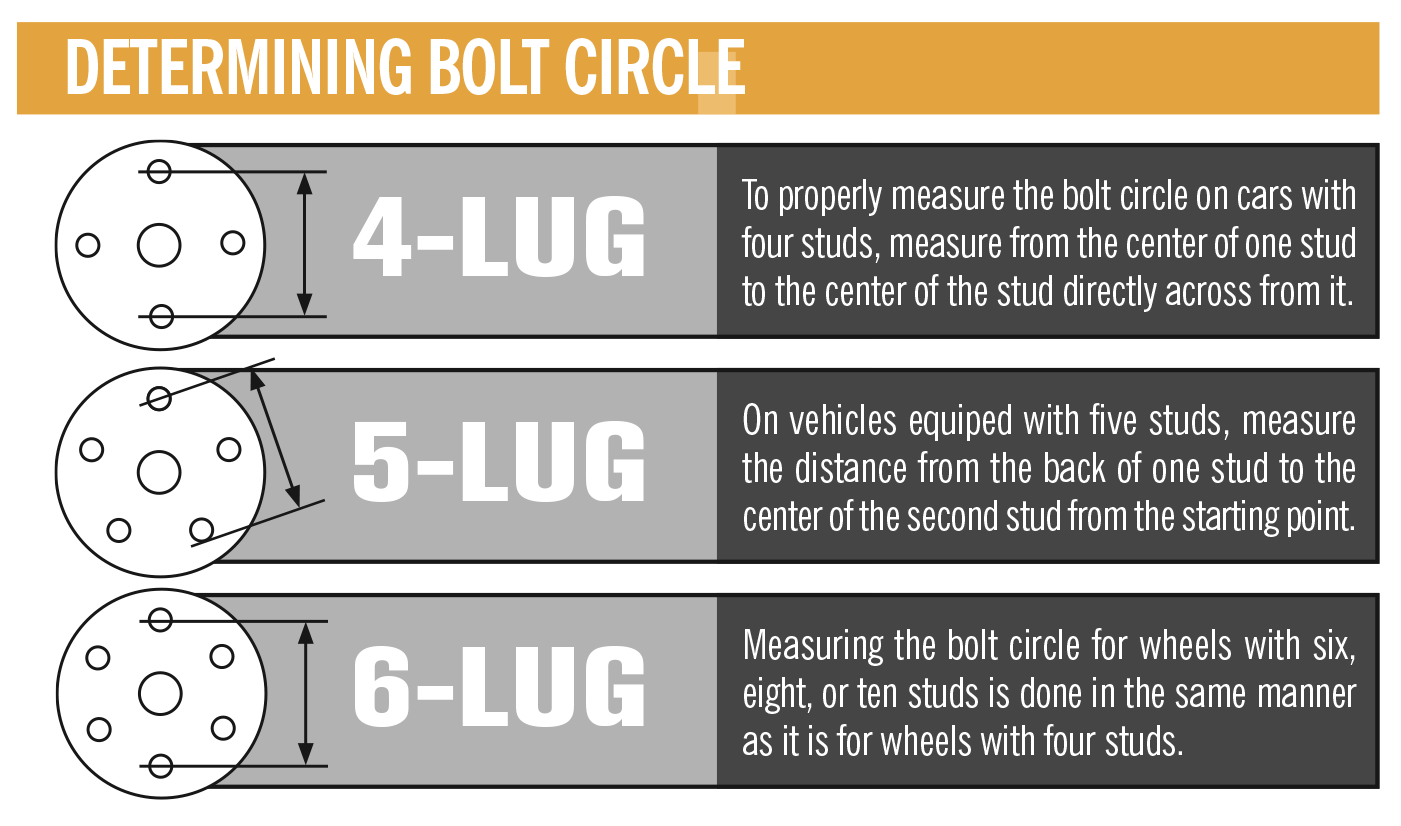
WHEEL CONSTRUCTION
Over the years, wheels have been constructed from a wide variety of materials. Steel wheels remain popular today in the aftermarket for those enthusiasts looking to capture a vintage look for their car. Aluminum alloy wheels continue to dominate the market. Lightweight alloys offer the enthusiast a good looking wheel that will actually allow the car to accelerate, brake, and steer better.
Not all alloy wheels are equal. The methods used to form the metal into a wheel will affect the quality, weight, strength and overall cost of the wheel. Forging is considered the best quality; the process creates the strongest and lightest weight wheels. These wheels will lighten your wallet as well, and most of us will never drive our cars to the extremes where this level of wheel is needed.
Cast and billet wheels are far more commonplace for most street performance enthusiasts. Cast wheels are made just as the name implies; melted alloy is poured into a mold and allowed to cool before removing and finish machining. While billet wheels are CNC milled from a solid block of alloy.
Almost all wheels are constructed in one, two, or three-pieces. One-piece designs are generally cast wheels and as the name implies are cast in one piece. Two-piece wheels consist of a center section and a hoop. Often, the center section can be welded in a range of positions within the hoop, giving the manufacturer the ability to offer the same wheel with a wide range of backspacing. Three-piece wheels are made with a center section and the hoop is separated into front and back sections. This design is common with forged wheels and can be often identified by the ring of bolts or rivets around the center section holding the three pieces together. Knowing your driving needs and the style of your car will make your final wheel decision easier.

TIRES RETROSPECTIVE
Few areas in automotive design have evolved as much as the performance automobile tire. From the time Charles Goodyear first discovered the process of vulcanizing rubber in the mid-1800s, turning it from a soft sticky substance into a material suitable for tire construction, tire manufacturers have worked relentlessly to develop the perfect tire. Milestones of the tubeless and radial tires were simply steps in the modern tire’s development. Today’s tires seem nothing like their predecessors; high tech composites, self-healing construction, and run-flat technologies have all improved the tire’s safety and performance.
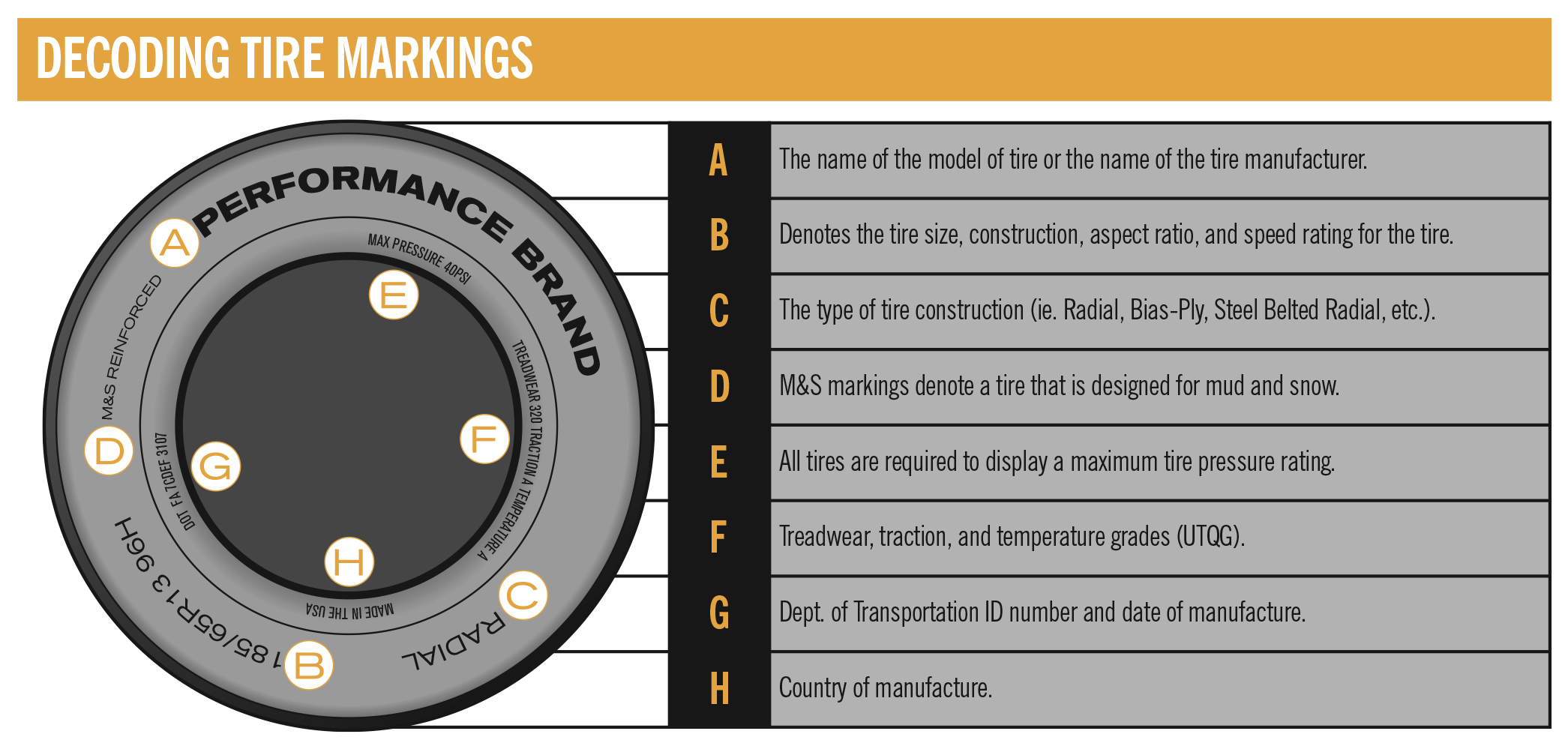
TIRE DATING
Long overlooked and perhaps taken for granted, tire dating has become a hot button topic among many enthusiasts. Let’s face it unless you purchase a turnkey street machine, many of our cars can take years to complete. Often one of the first things we purchase is a set of wheels and tires. After all, we’re going to need the right size tires to determine the best ride height and stance of our new ride. Years later, our new ride is ready to hit the street. We attend a dozen or so car shows each year, and after a couple of years we’ve become confident in how the new ride is running and we’re ready to take the big cruise down the interstate for that distant car show. Only a few hours into our trip and suddenly we’re on the side of the road looking at our shredded tires, scratching our heads trying to figure out how they could fall apart after only 2,000 miles.
The answer is simple, as tires age the bond between the cords and the rubber breaks down. While sustained highway speeds build heat into the tire and further break down the bond, this same scenario could be played out on city streets.
Tire manufacturers never considered the possibility of their tires surviving more than even 10 years, much less 20. Beginning in 2006, some U.S. car manufacturers began publishing warnings in their owner’s manuals, discouraging running tires in excess of six years old. Many car enthusiasts feel this timeframe may be too short for replacement, citing the fact their cars are stored indoors away from harmful UV rays, or that their shop is heated and the tires are never subjected to temperatures below freezing.
What is the safe limit? We suppose there are just too many variables to say for sure. Nevertheless, when it comes to the safety of your friends and family, peace of mind can be worth far more than a set of tires.
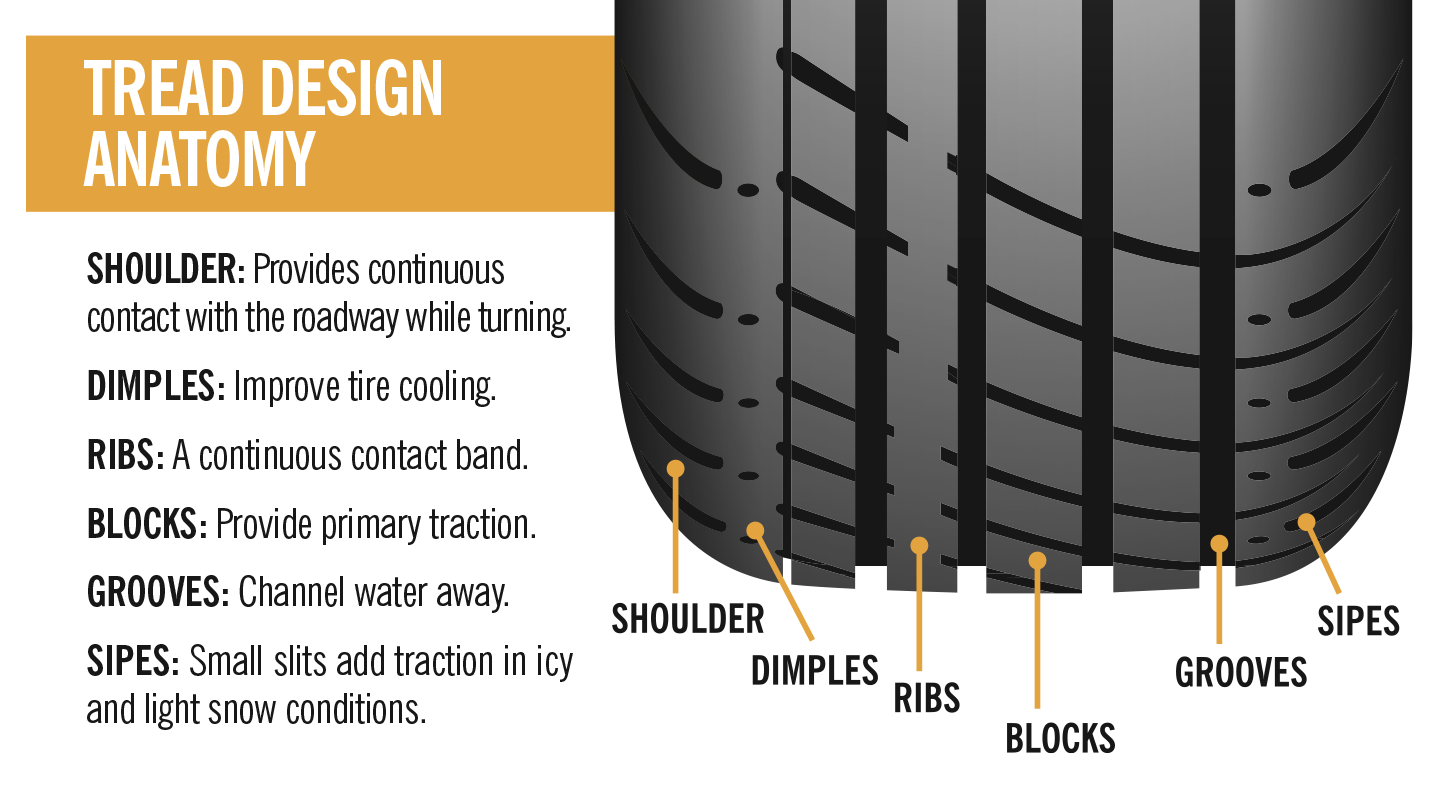
HOW OLD IS IT?
There is a required DOT number on the sidewall of your tires; the last four digits are the date code, for tires manufactured after 2000. For example, if the last four digits were 3207 this would indicate the tire was manufactured the 32nd week of 2007. Tires manufactured prior to 2000 have only three digits in the date code. They only used three digits, as they believed the tires would be exhausted before the last digit came around again. For example a tire built in the ’90s may have a date code of 126 followed by a triangle. This would indicate a production date of the 12th week of 1996. The triangle after the date code designates it as being produced in the ’90s. Tires manufactured in the ’80s share the same three-digit code but lack the triangle following the date code.
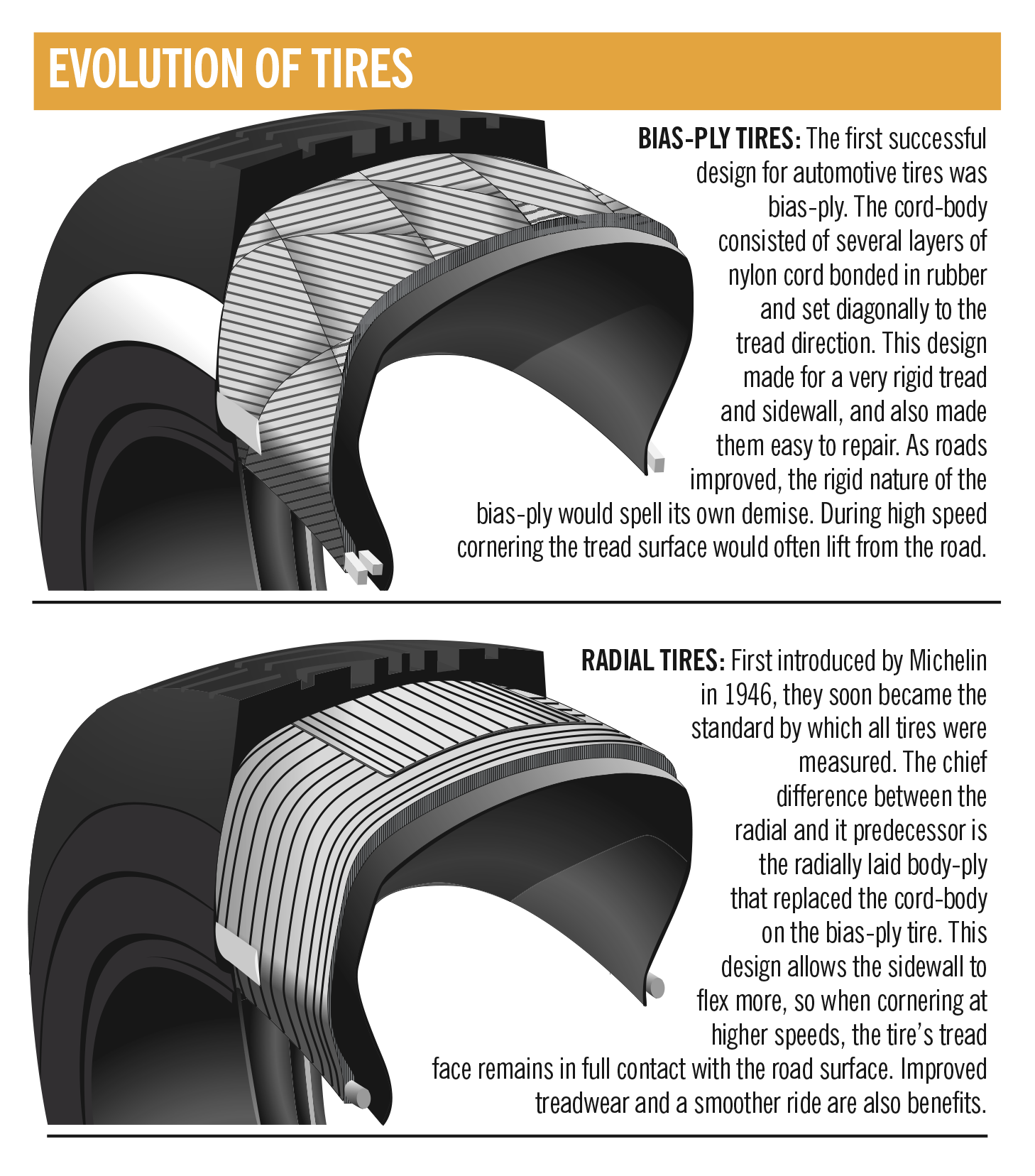
SCRUB-A-DUB
Another important aspect in tire performance and safety is tire scrubbing. When tires are manufactured, a release agent is used in the mold to ensure the tire can be removed cleanly and give the tire a smooth new tire finish. The release agent can adversely affect tire characteristics, especially in performance driving conditions.
For this reason most manufacturers recommend low performance driving for the first 500 miles. This will effectively scrub the release agent from the tire’s tread surface and allow the tire’s compounds to adhere to the road surface as they were designed.
IT’S A GAS
One of the more recent twists on improving tire performance is the introduction of those claiming the benefits of nitrogen filled tires. Proponents of nitrogen claim its larger molecule size will not permeate the rubber and leak down tire pressure. While others claim, it reduces moisture in the tire making it less prone to building up heat within the tire. While we may not be prepared to draw a line in the sand and pick a side, we are more than a little skeptical of their claims. Let’s take a closer look at the science behind it.
Most tires are filled with air and the primary components in air are 78-percent nitrogen and 21-percent oxygen. It is unlikely if you plan to fill your tires with nitrogen that all of the existing air within the tire could be purged before filling. A conservative estimate would put the final percentages at approximately 90-percent nitrogen and 10-percent oxygen. Frankly, we’re not convinced you would see any benefit from it other than lightening your wallet at the tire shop.
FEELING THE PRESSURE
While we’re on the subject of air pressure, every time the price of gas goes up the stories of those running excessive pressure in their tires seems to follow suit. Yes, it’s true, higher pressure in your tires will make your car roll easier and likely increase your gas mileage.
But, at what cost? Increased air pressure reduces the size of your tires contact surface with the road, resulting in a reduction in handling performance and traction. It will dramatically reduce the life of your tires, and given the price of a new set of tires mounted and balanced, the trade off is not worth it.
Are Coker tires really that good
Very interesting and informative. Not many publications deal with this.
Interested in Muscle Car era
Ought to be required reading for all car owners. My question. I'm preparing to put 18" wheels on my project car after making "Required" improvements to suspension. Original wheels have a bore of 70mm. If the new wheels require spacers, will the new wheels still have to have a 70mm bore?
I have a 1946 Plymouth convertible, which was stashed in a barn by the original owner, in 1956. Fast forward to today. I have a set of 16" WWW tires that cost me $1663.50. The OEM wheels are beat up enough that at 65 MPH ( I have OD) the inside rear view mirror is a blur. WHY can't anyone offer replacement rims for these great old MoPars, which will accept the correct tires and original hubcaps, and let these cars get back to what they were built to do- cruise!
Also consider tire diameter. Larger diameter tires you will be going faster than your speedo says if it is run off the signal from your tranny.
Great article! Not very many people pay attention to this type of info, which they should since tires are the only thing between the car and the road. And that contact patch is only so big. Keep 'em rolling and Keep the Rubber side down!
great article - the tire date source is very helpful.
Great article everyone should read this as the tires are the last thing people think about, Can I use this for our club newsletter?
My question , with increased horsepower you want increased traction. How to decide which tire? slick, drag radial, how to pick? Is there one you could leave on the car, street & street type.